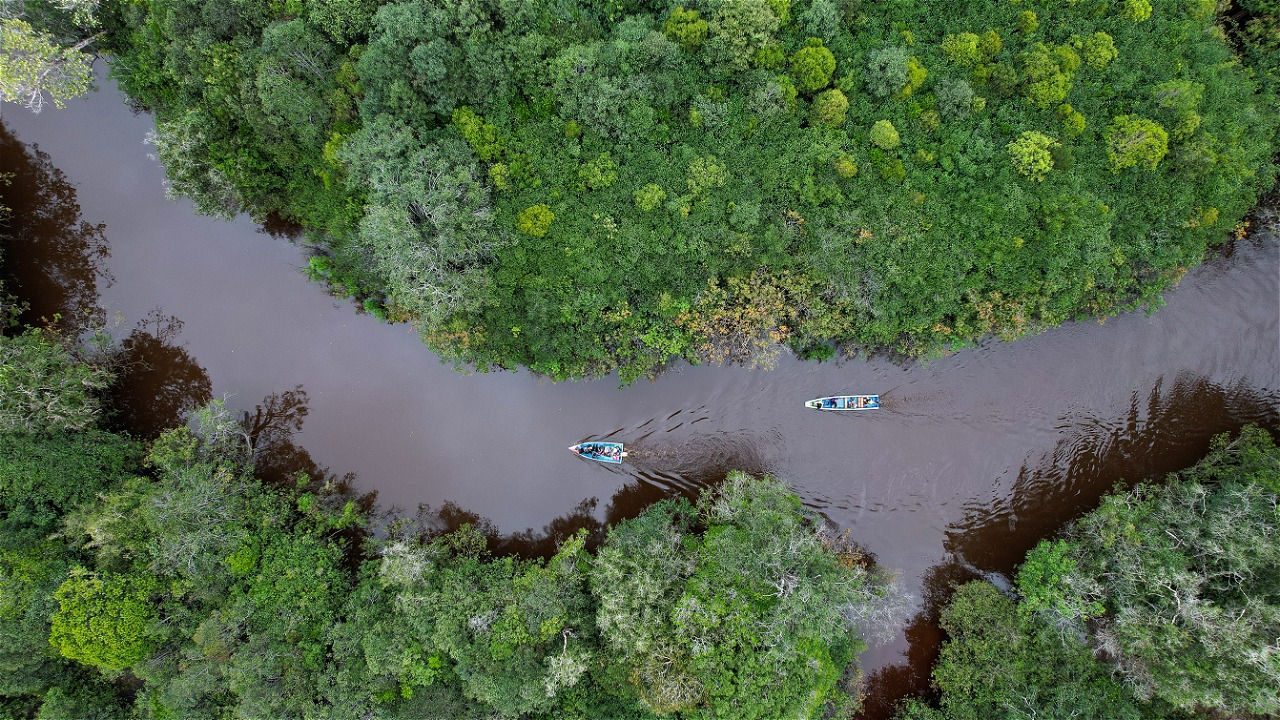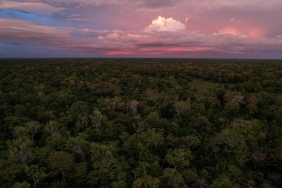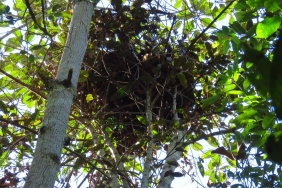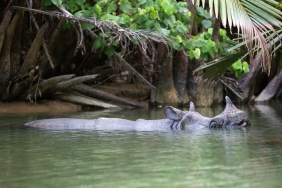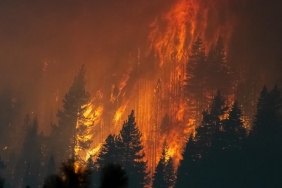PROTECT THE RIVER, PROTECT PEOPLE, PROTECT LIFE
By: Agus, Freshwater Program
A river is a part of the earth's surface that is lower than the surrounding land and becomes a place where fresh water flows into the sea, lake, swamp or other rivers. Rivers, from upstream to downstream, are an important source of life for various living things. Rivers do not only belong to humans, but they are also habitats for other creatures created by God. Many animals and plants, as well as other living things that make rivers their habitat, as well as local communities who make rivers the lifeblood of their livelihoods, there is no denying that the survival and welfare of their lives depend on rivers. Not only as a means of transportation and fulfillment of daily needs, the surrounding community also relies on the river as an economic source. However, development around the forest that does not pay attention to the water catchment area has disrupted the river ecosystem. This causes erosion, sedimentation and pollution.
WWF's Living Planet Report (LPR) in 2016 showed that globally, the Living Planet Index (LPI) for freshwater populations decreased significantly by 81% from 1970 to 2012, with an average annual decline of 3.9%. This decline is due to environmental changes, some of which include human alterations to the water cycle that impact the climate and biosphere. This results in the deaths of 5 million people from waterborne diseases every year. In Indonesia itself, several islands are already experiencing water deficits, including the islands of Java, Sulawesi, Bali, and NTT.
Although Sumatra still has a surplus of freshwater, the existence of these freshwater sources is currently threatened by pollution caused by environmentally unfriendly activities such as mining, industrial waste disposal, household waste, and other social activities. The Subayang River is a sub-watershed of the Kampar River Basin that serves as the lifeblood of freshwater sources for parts of Riau and West Sumatra. Its existence is very important for about 1 million people who live around the river from upstream to downstream.
In addition, Rimbang Baling is one of the areas that is key to the future sustainability of ecosystems on the island of Sumatra. Apart from being a habitat for a variety of rare fauna and unique flora, the Rimbang Baling area also plays an important hydrological role as the upstream and catchment area for several rivers in Sumatra. This is driven by the important role of rivers for local communities, from transportation and fulfillment of daily needs, to economic resources. Various local wisdoms to protect the river are threatened by land conversion into oil palm plantations and various illegal mining businesses.
These facts underlie WWF Indonesia in collaboration with HSBC to initiate an awareness program on water issues in Subayang River, Rimbang Baling, through the Freshwater program. Since 2015, WWF has collaborated with Riau University (UNRI) to conduct research and build a natural Freshwater Laboratory and information house in the area around Tanjung Belit village, Rimbang Baling. The purpose of this facility is to provide a platform for the people of Rimbang Baling to learn and discuss more about water, and why it is important for us to conserve it. It is hoped that in addition to being used by the Rimbang Baling community, this laboratory can also become a center for student research on matters related to water and rivers. WWF together with various parties are making efforts to protect water sources in Rimbang Baling through approaches to the community in order to maintain its sustainability.
The Freshwater program by creating a natural freshwater laboratory in the Subayang River, Rimbang Baling will be a place for public curiosity, especially students and the Rimbang Baling community about the importance of water and the current water conditions and the relationship between water for life and ecosystem balance, especially since Rimbang Baling is also the habitat of the endangered Sumatran tiger. (More information can be seen in the following flyer/link: WWFID Freshwater Laboratory Information).
The Water Laboratory is also a synergy and collaboration between the community in the Rimbang Baling area and the urban community in making efforts to protect our freshwater resources, which are only 3% of the world's total water. At the Water Laboratory, visitors can test water samples brought from home or other sources to determine the condition or quality of water that is usually consumed daily. In addition, visitors also have the opportunity to gain knowledge about the sources and benefits of water, as well as many other interesting things about rivers from all over Indonesia.
In addition, WWF Indonesia through the Freshwater Program also conducts various research on freshwater, one of which is through periodic monitoring of the water quality of the Subayang river. Water quality monitoring is carried out every month, using physical, chemical and biological parameters. Water quality monitoring activities of the Subayang River have started in August 2016 and take place regularly until now. water quality monitoring activities of the Subayang river regularly every month starting from August 2016 until now. (Monitoring results can be seen in the following flyer/link: Information on Monitoring Results of Subayang River_Freshwater WWFID).
Other research conducted was to identify the types of freshwater fish in the Subayang River. Based on research conducted by Riau University and WWF Indonesia in 2015, there are more than 72 species of fish in the Subayang River, some of which have been difficult to find in other areas. (The results of the identification of fish species in Subayang River can be seen in the following flyer/link: Subayang River Fish Species_Freshwater_WWF-ID).
The river is not just a tangle of water that flows to the estuary, the river is a source of life, the ripples of water fertilize the soil and plant life in the forest, to become a source of food for animals such as tigers and others. Like a social media network where humans are connected in cyberspace, the river is the center of the forest ecosystem network.
In the natural universe, ecosystems are the balance that connects the universe and drives life. When the river is polluted, the forest will be destroyed, the ecosystem will be paralyzed, the animals will die, we will die.
It's time to clear the river, preserve the forest ecosystem, save life. Happy World River Day. Let's protect the river for the future of life!

